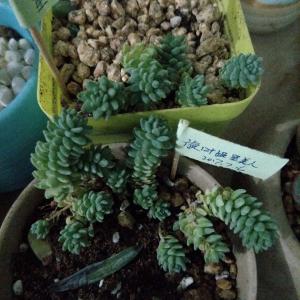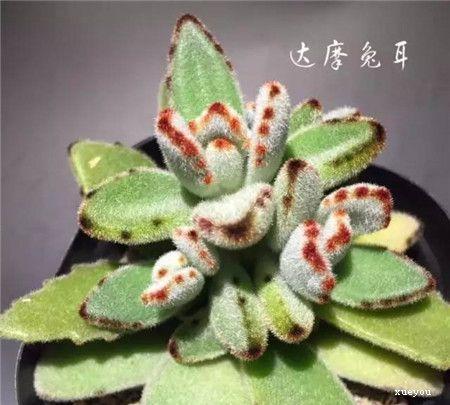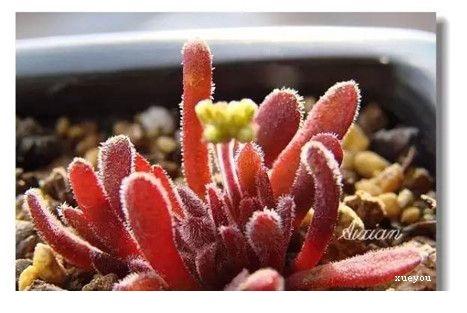文章
Colour_
2017年07月17日


金桂花的养殖方法
1、湿度:据了解,金桂在7月份的平均气温在24-28℃,最适宜金桂生长的气温在15-28℃。湿度对于金桂来讲非常重要,尤其是在金桂是幼龄期和常年树开花时期,对水分的吸收较多,若经常干旱会严重影响金桂的正常开花。
2、光照:金桂花卉喜温暖,其抗逆性较强,既耐高温,也较耐寒。金桂较喜阳光,但应避免强日照和荫蔽,对其生长不利,花卉每天应需要6-8个小时的来吸收光合作用。在全光照下其金桂的枝叶能够生长茂盛,开花集锦;而在荫蔽的环境条件下,金桂生长枝叶稀疏、花稀少。
3、生长环境:金桂适宜种植在土层深厚、疏松肥沃、排水性较好的砂质土壤环境中,更有利于金桂花卉的生长。金桂若种植在室内应加强室内通风,使得金桂看起来更加美观。
4、浇水施肥:金桂在栽植前,应在其树穴内掺入草本灰及有机肥料,同时在栽植后浇一次透水。为了能够使金桂新枝长出前,保持土壤湿润,切记不可浇肥水。金桂一般在春季施用一次氮肥,夏季施用一次磷肥、钾肥,使得金桂花繁叶茂。金桂花卉在入冬前施用一次有机肥,以腐熟的饼肥、厩肥为主。忌浓肥,尤其忌入粪尿。同时加强室内的通风,在冬季尽量少浇水。

金桂花的养殖注意事项
1).浇水:桂花盆土要掌握不干不浇,浇则浇透的原则,但要每天向叶面喷洒一次清水,均匀喷湿所有的枝叶,以开始有水珠往下滴为宜,以保持叶片湿润,并清洗去吸附在叶片上的灰尘。清明节后将桂花移置露天,浇一次透水。夏季须在早晚浇水,冬季则在中午前后浇水,使水温与土温接近,不致骤冷骤热,注意不可积水。冬季保持盆土湿润即可。
2).施肥:桂花以观花为主,应供给充分的肥料。抽梢时,可施1~2次氮肥,促进枝叶生长;花芽分化和开花前,则以施磷肥为主。春季将桂花移置露天后,开始浇腐熟稀薄的豆饼.麻酱.鱼腥水等,每半月一次,5月底至开花前每周浇一次,肥水浓度逐渐增加,7~8月每隔半月追施一次0.5%磷酸二氢钾溶液。花后追施一次清淡的肥液,以免引发秋枝。在冬季要多施有机肥和磷钾肥,一般每15—20天根部施一次沤制腐熟并己除臭的饼肥25—30克,磷酸二氢钾10—15克,兑清水2一3分斤后淋施,并每10—15天叶面喷一次1000倍核苷酸。600倍高效生物磷钾肥混合液,均匀喷湿所有的枝叶,以开始滴水为宜。施肥前,盆土要稍干些,并宜先松下土,以便肥料的吸收。施肥的第二天应浇一次水。如用堆肥或厩肥,一定要完全腐熟后才能使用(其标志是肥汁发黑)。应用化肥过磷酸钙,其浓度不能超过2%,尿素浓度是0.5-1.0%。
3).倒盆:盆栽桂花每2--3年要倒盆换土一次。剪去一部分老根和枯根,用竹签剔去一部分旧土。上盆前在盆底垫上一层河沙或蛭石,以利通气排水,并在盆底放置腐熟饼肥为基肥,填土一定要压实,这样可促进桂花花繁叶茂。盆栽挂花的用土配比不很严格,通常可用园土、堆厩肥和河砂各占l/3配制而成。如酸性过高,可添加一些石灰粉或草木灰;碱性过重,则可加入一些硫酸铝或硫酸亚铁等。春季,盆栽桂花种好后,要浇足透水,然后移至庇荫处约10天,使 其"服盆"。服盆期间,不能施肥。在恢复生长并长出新叶后,方可浇水和施肥。花盆的质地以紫砂陶盆或釉陶盆为佳,色泽以紫色或赭色较好,可与花、叶色彩有鲜明对比,增加其观赏效果。
4).修剪整形:桂花造型以做成曲干式、斜干式或飘逸式者为佳。树势斜展,枝叶密茂,古朴自然,最耐欣赏。开花时,浓香四溢,沁人心脾。桂花整形一般采取攀扎与修剪相结合的方法,主干可攀扎成曲干形或斜干式。桂花的整形修剪宜在秋后进行,对生长很高而下部枝条很空,树形很差的植株,可在2/3或3/4处将整个顶部的枝条剪去,对"头重脚轻"的植株要剪去上部过密枝条,只留下部较小枝条,对枝条过密的植株,要进行疏剪。花后还应进行一次整枝,剪去徒长枝、枯枝、病虫枝、密生瘦弱枝。
5).越冬:室温宜保持O-5℃,相对湿度保持50-80%。冬季冷室内光照要好,尤其是早春芽开始萌动前,更要求阳光充足。次年春季,华北地区谷雨后(黄淮流域在惊蛰前后),安排盆栽桂花出室。出室后,先集中放置在室外背风向阳处,以后再散放成排,使其逐渐适应外界环境。
6).病虫害防治:桂花常见的病害有叶斑病、煤污病、藻斑病、根腐病、缺铁病等,应针对病害情况,予以防治。叶斑病、煤污病及藻斑病可喷射0.5波尔多液或5%多菌灵500~1000倍液防治;根腐病的防治,应注意保持土壤疏松透气,不要积水;如因真菌引起根腐时,可用代森铵200~300倍液浇灌根部。桂花常见的虫害有叶蜂、粉虱、螨、长白蚧、黄刺蛾等。叶蜂、粉虱、螨可用40%乐果1500~3000倍液喷杀,长白蚧除人工刷除外,在第一二代若虫时,可用40%氧化乐果1000倍液或40%杀螟松500倍液喷杀。
2
4
文章
Dummer. ゛☀
2017年07月17日

Family - Fabaceae
Stems - Woody, single. A tree to +15m tall. Bark tan to light grayish. Paired spines present on younger branches. New seasons growth angled, sparsely pubescent.
Leaves - Alternate, odd-pinnate, typically with 7-19 leaflets. Leaflets oval to elliptic, opposite, glabrous when mature, entire, to +2cm long, +1.5cm broad.
Inflorescence - Drooping Axillary racemes to +15cm long. Typically 20-30 flowers per raceme. Peduncle and pedicles pubescent.
Flowers - Corolla papilionaceous, 2cm long and tall. Standard to 1.8cm broad and long, with yellowish spot in center. Stamens diadelphous, tube to 1.4cm long. Anthers orange, -1mm long. Ovary green, flattened, 1.5cm long, 1.1mm broad. Style 6.5mm long, pubescent at apex, upcurving near apex. Calyx tubular, bilabiate, sparsely to moderately pubescent, green mottled with red. Upper lip 3-4mm long, notched at apex. Lower lip 3-lobed. Lobes 2.5mm long. Fruits compressed, +1cm wide, +/- 7cm long.
Flowering - May - June.
Habitat - Slopes, pastures, open woods, streambanks, roadsides.
Origin - Native to U.S.
Other info. - This tree is very common and is easily noticed when flowering. The flowers have a pleasant fragrance but each cluster only last a few days. My dad, who is the master of all things green and growing, recognized it from his days in Europe, where the tree also grows.
Stems - Woody, single. A tree to +15m tall. Bark tan to light grayish. Paired spines present on younger branches. New seasons growth angled, sparsely pubescent.

Leaves - Alternate, odd-pinnate, typically with 7-19 leaflets. Leaflets oval to elliptic, opposite, glabrous when mature, entire, to +2cm long, +1.5cm broad.
Inflorescence - Drooping Axillary racemes to +15cm long. Typically 20-30 flowers per raceme. Peduncle and pedicles pubescent.
Flowers - Corolla papilionaceous, 2cm long and tall. Standard to 1.8cm broad and long, with yellowish spot in center. Stamens diadelphous, tube to 1.4cm long. Anthers orange, -1mm long. Ovary green, flattened, 1.5cm long, 1.1mm broad. Style 6.5mm long, pubescent at apex, upcurving near apex. Calyx tubular, bilabiate, sparsely to moderately pubescent, green mottled with red. Upper lip 3-4mm long, notched at apex. Lower lip 3-lobed. Lobes 2.5mm long. Fruits compressed, +1cm wide, +/- 7cm long.

Flowering - May - June.
Habitat - Slopes, pastures, open woods, streambanks, roadsides.
Origin - Native to U.S.
Other info. - This tree is very common and is easily noticed when flowering. The flowers have a pleasant fragrance but each cluster only last a few days. My dad, who is the master of all things green and growing, recognized it from his days in Europe, where the tree also grows.
0
0
文章
Dummer. ゛☀
2017年07月16日

Family - Menispermaceae
Stems - Thin, twining, woody below, dark maroon in color, young portions with some hair but becoming glabrous (glabrescent). No tendrils.

Leaves - Alternate, petiolate, peltate (look from below to see), with 3-7 broad, shallow lobes, margins entire, upper surface glabrous, lower surface silvery-green with some pubescence.
Inflorescence - Pendant clusters of 40 or so flowers from leaf axils. Staminate and pistillate clusters separate on same plant.
Flowers - Petals 4-8, 2-3mm long, whitish, ovate, glabrous. Stamens numerous(+15).Filaments white, glabrous, -4mm long. Anthers yellow, -1mm long.
Fruits - Drupes, indigo-black in color, somewhat glaucous, 6-7mm in diameter.

Flowering - May - July.
Habitat - Moist woods, thickets, fence rows.
Origin - Native to U.S.
Other info. - Although the plant and fruits may loosely resemble grapes, they should not be eaten as they are mildly toxic. The plant can climb to around 7m or so.
Stems - Thin, twining, woody below, dark maroon in color, young portions with some hair but becoming glabrous (glabrescent). No tendrils.

Leaves - Alternate, petiolate, peltate (look from below to see), with 3-7 broad, shallow lobes, margins entire, upper surface glabrous, lower surface silvery-green with some pubescence.
Inflorescence - Pendant clusters of 40 or so flowers from leaf axils. Staminate and pistillate clusters separate on same plant.
Flowers - Petals 4-8, 2-3mm long, whitish, ovate, glabrous. Stamens numerous(+15).Filaments white, glabrous, -4mm long. Anthers yellow, -1mm long.
Fruits - Drupes, indigo-black in color, somewhat glaucous, 6-7mm in diameter.

Flowering - May - July.
Habitat - Moist woods, thickets, fence rows.
Origin - Native to U.S.
Other info. - Although the plant and fruits may loosely resemble grapes, they should not be eaten as they are mildly toxic. The plant can climb to around 7m or so.

0
0
成长记
jikouforever
2017年07月15日

没想到6月23日和7月2日发现黑腐,抢救出来的紫丽殿,两盆同时黑腐了。再次砍头,泡多菌灵,晾几天看看。还剩下两小盆,不知道会不会很快开始黑腐。


0
0
文章
Dummer. ゛☀
2017年07月14日

Family - Rhamnaceae
Stems - Woody, multiple from base, to 1m tall, branching, ferruginous, sparse pubescent, rugose. New growth sericeous, green.
Leaves - Alternate, petiolate, stipulate. Stipules 4.5mm long, 1mm broad, pubescent, attenuate. Petioles to 7mm long, pubescent. Blades to 6cm long, -3cm broad, oblong-elliptic to lance-oblong, crenate-serrate, blunt to acute, densely pubescent(villous) and dull below, deep green and pubescent above, rounded to cuneate at base.
Inflorescence - Terminal panicles from new growth. Peduncles shorter then subtending leaf, to 2cm long, lanate. Pedicels white, to 1.4cm long, .6mm in diameter, expanding just below hypanthium.
Flowers - Petals 5, white, long clawed, spreading, glabrous, to 2.5mm long. Limb to 1.2mm broad, cupped. Stamens 5, opposite petals, erect. Filaments to 2mm long, white, glabrous. Anthers .2mm long, yellow. Style 3-lobed, 2mm long, glabrous, white. Ovary 3-locular, green, surrounded by peringynous disk. Calyx lobes 5, in-curved, white, glabrous, to 1.6mm long. Hypanthium white, 1mm long, persistent.
Flowering - April - June.
Habitat - Upland and rocky prairies, loess hills, glades, rocky woods.
Origin - Native to U.S.
Other info. - Steyermark lists two varieties for this species in the state. The plant described above is var. pubescens T.&G. ex Wats. A synonym for this variety is C. herbaceous var. pubescens (T.&G.) Shinners. This is the most common variation found in the state. The other variety, var. ovatus, has leaves which are glabrous to only sparse pubescent below.
This species is scattered throughout portions of the state but is most frequent in the western half of the state. Another species, C. americanus L., resembles this species but the former has more ovate leaves, more cylindric inflorescences, and longer peduncles. C. americanus is listed in this same section of this website. Both species are brewed as tea for medicinal uses.
Stems - Woody, multiple from base, to 1m tall, branching, ferruginous, sparse pubescent, rugose. New growth sericeous, green.

Leaves - Alternate, petiolate, stipulate. Stipules 4.5mm long, 1mm broad, pubescent, attenuate. Petioles to 7mm long, pubescent. Blades to 6cm long, -3cm broad, oblong-elliptic to lance-oblong, crenate-serrate, blunt to acute, densely pubescent(villous) and dull below, deep green and pubescent above, rounded to cuneate at base.
Inflorescence - Terminal panicles from new growth. Peduncles shorter then subtending leaf, to 2cm long, lanate. Pedicels white, to 1.4cm long, .6mm in diameter, expanding just below hypanthium.

Flowers - Petals 5, white, long clawed, spreading, glabrous, to 2.5mm long. Limb to 1.2mm broad, cupped. Stamens 5, opposite petals, erect. Filaments to 2mm long, white, glabrous. Anthers .2mm long, yellow. Style 3-lobed, 2mm long, glabrous, white. Ovary 3-locular, green, surrounded by peringynous disk. Calyx lobes 5, in-curved, white, glabrous, to 1.6mm long. Hypanthium white, 1mm long, persistent.
Flowering - April - June.

Habitat - Upland and rocky prairies, loess hills, glades, rocky woods.
Origin - Native to U.S.
Other info. - Steyermark lists two varieties for this species in the state. The plant described above is var. pubescens T.&G. ex Wats. A synonym for this variety is C. herbaceous var. pubescens (T.&G.) Shinners. This is the most common variation found in the state. The other variety, var. ovatus, has leaves which are glabrous to only sparse pubescent below.
This species is scattered throughout portions of the state but is most frequent in the western half of the state. Another species, C. americanus L., resembles this species but the former has more ovate leaves, more cylindric inflorescences, and longer peduncles. C. americanus is listed in this same section of this website. Both species are brewed as tea for medicinal uses.
0
0
文章
Dummer. ゛☀
2017年07月12日

Family - Scrophulariaceae
Stems - To 1.75m tall, branching above or not, erect, herbaceous, glabrous to pubescent or villous.
Leaves - Whorled, up to 7 at a node but typically four or five, sessile to very short petiolate. Blade lanceolate to linear oblong, serrate, to +12cm long, +2cm broad, glabrous above, dense pubescent below.
Inflorescence - Terminal spikiform racemes to 20cm long(tall), densely flowered, indeterminate. Pedicels to .5mm long. Each flower subtended by a small attenuate bract to 1.1mm long.
Flowers - Corolla subbilabiate, white (sometimes pinkish), glabrous. Corolla tube to 6mm long. Upper lip single lobed. Lobe to 1.5mm long, rounded. Lower lip 3-lobed. Lobes rounded, to 1.5mm long. Stamens 2, exserted, adnate near base of corolla tube. Filaments pubescent at base, white, to 1.3cm long. Anthers orange, to 1.3mm long. Style glabrous, brown, included, to 7mm long. Ovary green, glabrous, superior, 1mm long, with deep green nectariferous ring at base. Locules 2. Placentation axile. Fruit a terete capsule to -5mm long, many seeded. Calyx subbilabiate, the sepals appearing almost distinct. Lobes lanceolate, to 1.5mm long, acute, glabrous, green. Lower lobes typically a bit longer than the upper lobes.
Flowering - June - August.
Habitat - Moist to wet open ground, rich open woods.
Origin - Native to U.S.
Other info. - This plant is easily identified as nothing else in the state's flora resembles it. The plant is being cultivated more frequently and adds a brilliant white splash of color to any landscape. It also re-seeds easily. A common name for the plant is "Veronica" which is bad because the genus Veronica is in the same family but the plants are totally different. Just another reason to learn the scientific names.
Stems - To 1.75m tall, branching above or not, erect, herbaceous, glabrous to pubescent or villous.

Leaves - Whorled, up to 7 at a node but typically four or five, sessile to very short petiolate. Blade lanceolate to linear oblong, serrate, to +12cm long, +2cm broad, glabrous above, dense pubescent below.

Inflorescence - Terminal spikiform racemes to 20cm long(tall), densely flowered, indeterminate. Pedicels to .5mm long. Each flower subtended by a small attenuate bract to 1.1mm long.
Flowers - Corolla subbilabiate, white (sometimes pinkish), glabrous. Corolla tube to 6mm long. Upper lip single lobed. Lobe to 1.5mm long, rounded. Lower lip 3-lobed. Lobes rounded, to 1.5mm long. Stamens 2, exserted, adnate near base of corolla tube. Filaments pubescent at base, white, to 1.3cm long. Anthers orange, to 1.3mm long. Style glabrous, brown, included, to 7mm long. Ovary green, glabrous, superior, 1mm long, with deep green nectariferous ring at base. Locules 2. Placentation axile. Fruit a terete capsule to -5mm long, many seeded. Calyx subbilabiate, the sepals appearing almost distinct. Lobes lanceolate, to 1.5mm long, acute, glabrous, green. Lower lobes typically a bit longer than the upper lobes.
Flowering - June - August.
Habitat - Moist to wet open ground, rich open woods.
Origin - Native to U.S.
Other info. - This plant is easily identified as nothing else in the state's flora resembles it. The plant is being cultivated more frequently and adds a brilliant white splash of color to any landscape. It also re-seeds easily. A common name for the plant is "Veronica" which is bad because the genus Veronica is in the same family but the plants are totally different. Just another reason to learn the scientific names.
0
0
文章
Dummer. ゛☀
2017年07月12日

Family - Hydrangeaceae
Stems - To 2.5m tall, multiple from base, branching, woody.
Leaves - Opposite, 5-7 lobed, petiolate, margins serrate, tomentose below, sparsely hairy to glabrous above, to +12cm broad, +15cm long.
Inflorescence - Dense, terminal panicle to +30cm long. Peduncle and axis puberulent to tomentose.
Flowers - Outer flowers of inflorescence with 4 white, petaloid sepals (petals absent), sterile, to +2.5cm broad. Inner flowers small, with greenish sepals, fertile. Stamens 8-10, spreading. Filaments greenish-white, to 8mm long, glabrous. Anthers biglobose, whitish, 1.2mm broad.
Flowering - June - August.
Habitat - Cultivated.
Origin - Native to southeastern U.S. (Florida, Georgia, Mississippi).
Other info. - This species is unmistakable while flowering because of the large panicles it produces. There are around 7-8 cultivars on the market. It prefers well drained yet cool soil.
The species name means "Oak-leaved" and the leaves do slightly resemble those of the Red Oak group.
Stems - To 2.5m tall, multiple from base, branching, woody.
Leaves - Opposite, 5-7 lobed, petiolate, margins serrate, tomentose below, sparsely hairy to glabrous above, to +12cm broad, +15cm long.

Inflorescence - Dense, terminal panicle to +30cm long. Peduncle and axis puberulent to tomentose.
Flowers - Outer flowers of inflorescence with 4 white, petaloid sepals (petals absent), sterile, to +2.5cm broad. Inner flowers small, with greenish sepals, fertile. Stamens 8-10, spreading. Filaments greenish-white, to 8mm long, glabrous. Anthers biglobose, whitish, 1.2mm broad.

Flowering - June - August.
Habitat - Cultivated.
Origin - Native to southeastern U.S. (Florida, Georgia, Mississippi).
Other info. - This species is unmistakable while flowering because of the large panicles it produces. There are around 7-8 cultivars on the market. It prefers well drained yet cool soil.
The species name means "Oak-leaved" and the leaves do slightly resemble those of the Red Oak group.
0
0
文章
Miss Chen
2017年07月11日


#观赏向日葵 为菊科向日葵属一年生花卉,株高90至300厘米,花期7至9月,花色有金黄色、红色及复色等,一般成片种植,开花时金黄耀眼,既有野趣,又极为壮观,广泛用于切花、盆花、染色花、庭院美化及花境营造等领域,下面我们就一起来看一看观赏向日葵怎么种吧!

生长习性
观赏向日葵原产北美地区,喜温暖、稍干燥和阳光充足环境,耐旱,可盆栽也可露地栽培。露地栽培光照时间长往往开花略早,温差在8~10℃对茎叶生长最为有利。大多是单瓣品种,也有重瓣品种。以盆栽矮生种为例,从播种至开花需50~60天。

繁殖方法
观赏向日葵育苗采用播种繁殖,一般于4月进行播种,发芽的最适温度为15至18℃,可用浅盆或浅箱播,介质要求疏松,保水性良好,无菌等。播种以点播为宜,每穴播2粒,播后需覆盖1至2厘米厚介质,以维持发芽所需的湿度,并增加苗期的稳定性,减少带壳苗的发生。一般播后7至14天发芽,出苗后注意通风降温,控制湿度,并逐步见光。

适时定植
观赏向日葵当幼苗出齐后陆续间苗,每穴留1株,苗高7至8厘米时可定植。盆土以富含腐殖质,排水良好的砂质土壤为好。定植时盆底施足基肥,掘取苗时尽量多带土,少伤根,以使植株较快恢复。

种植管理
1、光照:整个生长发育期均需充足阳光,如阴雨连绵或长期在半阴环境中生长,茎干不挺拔,叶片柔软、下垂、呈黄绿色,花盘小而不整齐。
2、温度:生长适温白天为21~27℃、夜间为10~16℃。如温度偏低,则生长迟缓,影响开花时间。若温度超过30℃,茎叶容易徒长,花期缩短。
3、水分:观赏向日葵的植株大基质相对少,因此生长期要及时浇水,否则叶片容易脱水凋萎。但不宜过湿,湿度过大,基部叶片容易发黄。
4、肥料:观赏向日葵在生长期每20天施肥1次,通常用800倍多种复合肥料水释后轮换施用,但开花前应追施2至3次稀薄的磷钾肥以利开花。
5、栽培:盆栽不摘心,以单花为好。高秆品种发芽后20天可用0.25~0.4%B9溶液喷洒叶面控制植株高度。花坛观赏可摘心1次,可产生4~5朵花。
2
0
文章
Dummer. ゛☀
2017年07月11日

Family - Ranunculaceae
Stems - Twining to trailing or climbing, somewhat woody near base, herbaceous above, glabrous, carinate, much branched.
Leaves - Opposite, petiolate, twining, odd pinnately compound with typically 5-7 leaflets. Petiole to 4cm long, with an adaxial groove, sparse pubescent to glabrous. Leaflets ovate to ovate lanceolate or orbicular, some cordate at base, with petiolules to 3cm long and twining, entire, mucronate, deep green and glabrous above, dull green and sparse pubescent below, to +7cm long, +4cm broad.
Inflorescence - Axillary panicles. Peduncles and pedicels carinate, glabrous to sparse pubescent.
Flowers - Petals absent. Petaloid sepals 4, white to cream, to -2cm long, glabrous above, pubescent to sparse pilose below. Stamens +30. Filaments white, glabrous, to +/-8mm long. Anthers whitish to pale yellow, to 2mm long. Pistils 5, distinct, 8mm long, sericeous. Flowers fragrant. Achenes to 8mm long when mature, with persistent plumose style.
Flowering - July - October.
Habitat - Cultivated. Also escaped to waste ground, empty lots, roadsides.
Origin - Native to Japan.
Other info. - This is a showy and fragrant plant when in flower. The flowers are about 4-5cm broad and attract many good flying insects. The seeds are distributed by the wind and the plant escapes cultivation easily. It probably will become a pest in the future.
Stems - Twining to trailing or climbing, somewhat woody near base, herbaceous above, glabrous, carinate, much branched.
Leaves - Opposite, petiolate, twining, odd pinnately compound with typically 5-7 leaflets. Petiole to 4cm long, with an adaxial groove, sparse pubescent to glabrous. Leaflets ovate to ovate lanceolate or orbicular, some cordate at base, with petiolules to 3cm long and twining, entire, mucronate, deep green and glabrous above, dull green and sparse pubescent below, to +7cm long, +4cm broad.

Inflorescence - Axillary panicles. Peduncles and pedicels carinate, glabrous to sparse pubescent.
Flowers - Petals absent. Petaloid sepals 4, white to cream, to -2cm long, glabrous above, pubescent to sparse pilose below. Stamens +30. Filaments white, glabrous, to +/-8mm long. Anthers whitish to pale yellow, to 2mm long. Pistils 5, distinct, 8mm long, sericeous. Flowers fragrant. Achenes to 8mm long when mature, with persistent plumose style.

Flowering - July - October.
Habitat - Cultivated. Also escaped to waste ground, empty lots, roadsides.
Origin - Native to Japan.
Other info. - This is a showy and fragrant plant when in flower. The flowers are about 4-5cm broad and attract many good flying insects. The seeds are distributed by the wind and the plant escapes cultivation easily. It probably will become a pest in the future.
0
0











































